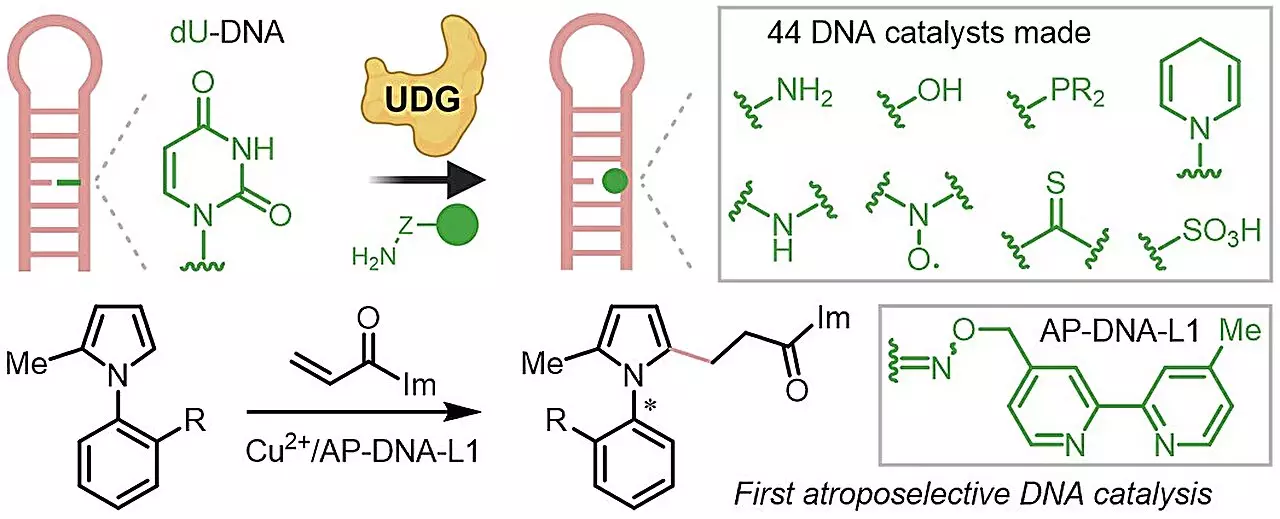Recent advancements in the field of asymmetric catalysis have opened new avenues for producing chiral molecules, which are essential in pharmaceuticals and other chemical applications. Researchers at the National University of Singapore (NUS) have made significant strides in this domain by harnessing the inherent properties of DNA to create highly efficient chiral catalysts. This development signals a transformative shift from traditional enzyme catalysis towards a more sustainable and versatile method leveraging DNA’s unique characteristics.
Enzyme catalysis has long been a cornerstone of chiral molecule synthesis due to the natural efficiency and specificity of biological proteins. However, this approach is not without its limitations. Proteins can be temperamental; they often exhibit instability under various conditions and require intricate techniques for manipulation. Such challenges necessitate the exploration of alternative scaffolds, where DNA emerges as a promising candidate. Unlike proteins, DNA offers not only enhanced stability but also a cost-effective and inherently programmable structure, making it an attractive option for chemists aiming to streamline the catalysis process.
Under the leadership of Assistant Professor Zhu Ru-Yi, the research team at NUS successfully merged DNA repair mechanisms with biorthogonal chemistry to facilitate the creation of diverse chiral DNA catalysts. This novel method simplifies the process significantly. Non-specialists now have the ability to conduct DNA catalysis with minimal need for sophisticated equipment or advanced technical skills. Additionally, biorthogonal reactions do not disturb existing functionalities, thereby enhancing the compatibility of these DNA catalysts with various chemical groups.
The research team’s efforts resulted in the establishment of a robust library comprising 44 distinct DNA catalysts. Remarkably, these newly developed catalysts demonstrated superior performance compared to previous iterations, excelling in terms of enantioselectivity and overall reaction efficiency. Among their groundbreaking findings is the inaugural demonstration of atroposelective DNA catalysis, enabling the synthesis of axial chiral compounds that present synthesis challenges in conventional methods. This achievement not only showcases the versatility of the newly designed catalysts but also hints at the vast potential of DNA in complex molecule synthesis.
Looking ahead, the NUS research team is keenly focused on refining their methodologies to enhance the selectivity and sustainability of chemical reactions through DNA catalysis. The implications of this work extend beyond mere academic interest; they promise a more environmentally friendly approach to producing vital chiral compounds in various industries. This innovative pathway not only aspires to simplify existing processes but also aims to deepen our understanding of DNA’s functional potential in synthetic chemistry.
The developments at NUS represent a remarkable leap forward in the domain of asymmetric catalysis. By unlocking the potential of DNA as a catalytic scaffold, the researchers have not only addressed the limitations of enzyme catalysis but have also set a new paradigm for chiral synthesis. As the team continues its exploration into the realms of DNA catalysis, the future of synthetic chemistry looks increasingly promising.

